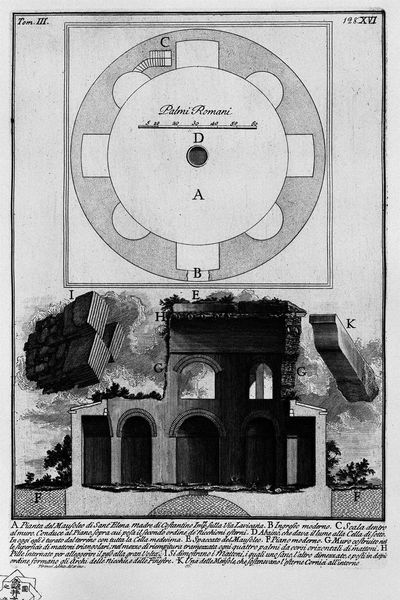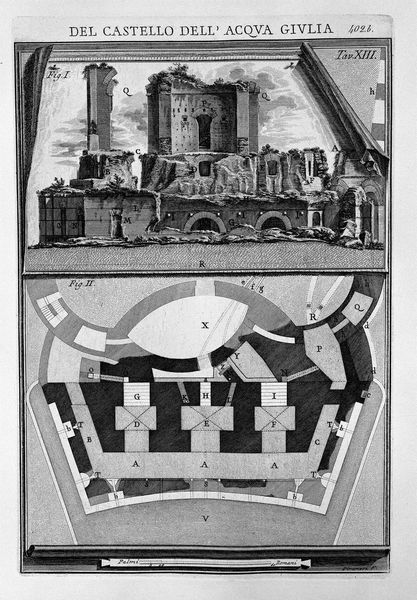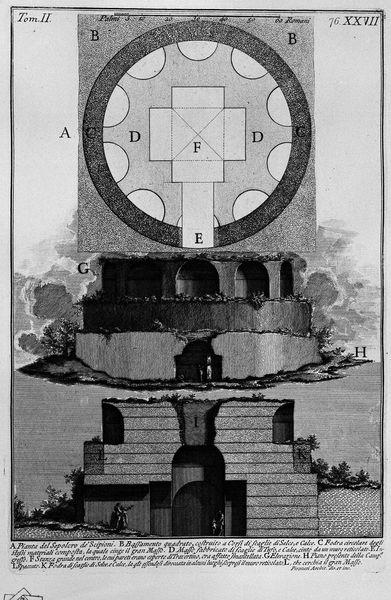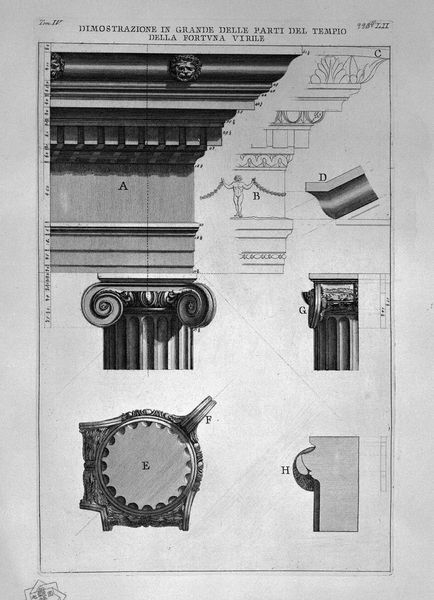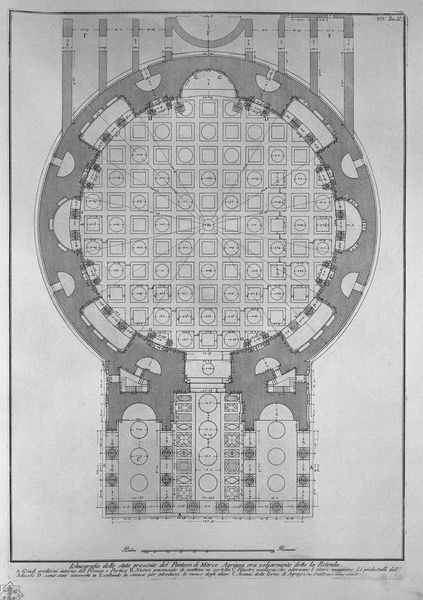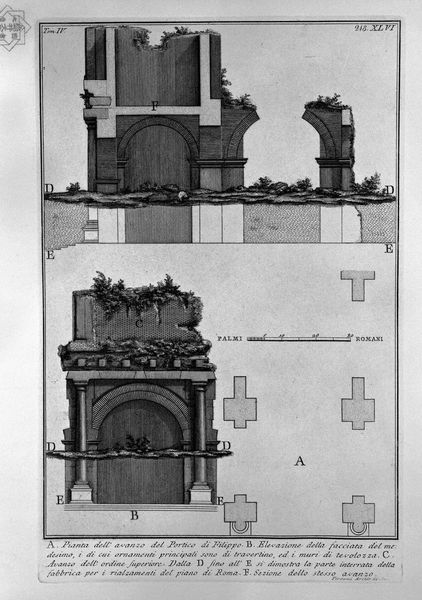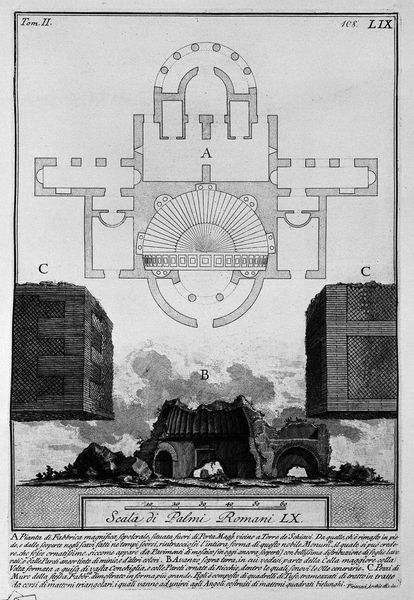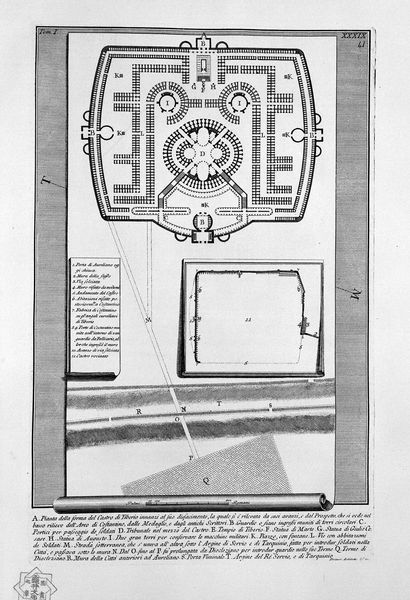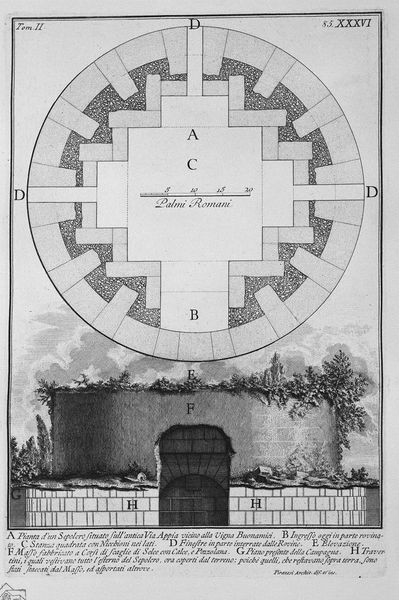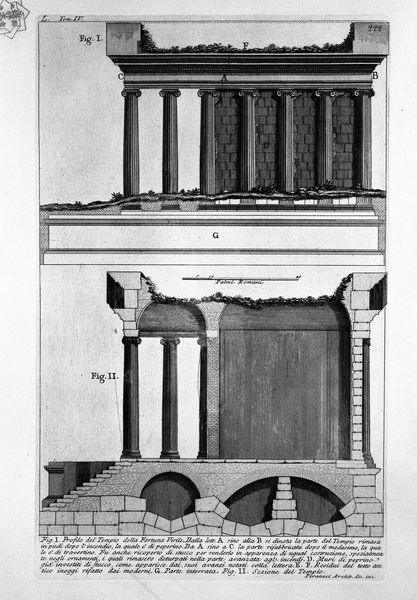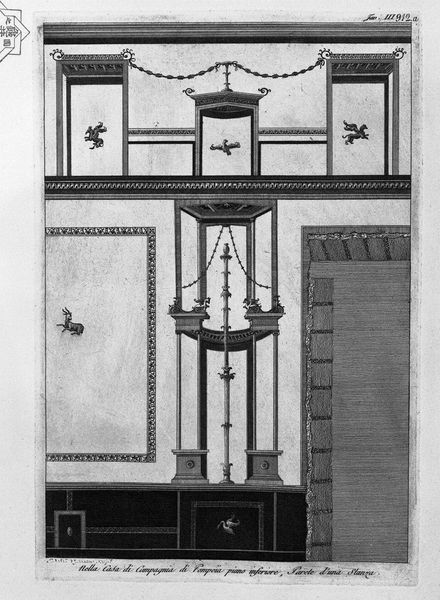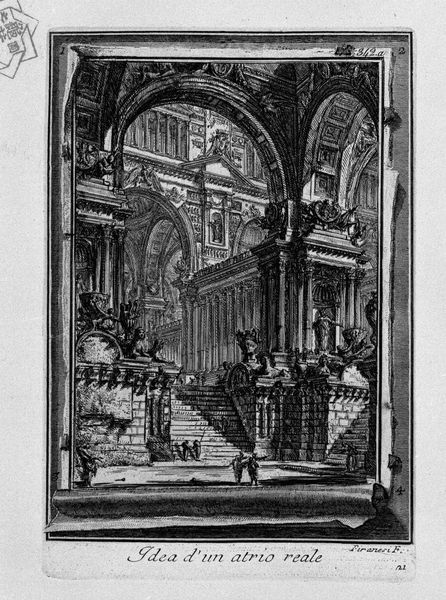
The Roman antiquities, t. 2, Plate XXIX. View of the Tomb of the Scipios believed outside Porta S. Sebastiano. 1756
0:00
0:00
drawing, print, engraving, architecture
#
drawing
#
neoclacissism
# print
#
landscape
#
form
#
geometric
#
arch
#
line
#
history-painting
#
engraving
#
architecture
Copyright: Public domain
Curator: Looking at this print, my first impression is one of contrasts: decay meets meticulous planning. It feels romantic, in a melancholic way. Editor: Indeed. This is Giovanni Battista Piranesi’s "View of the Tomb of the Scipios believed outside Porta S. Sebastiano" from 1756. It’s an engraving showcasing a fascination with Roman antiquity, and how it was consumed in his era. Curator: That makes sense. I see the fragmented ruins in stark contrast to the architectural plan above. It's like a ghost of what once was. The sharp lines used in the upper portion of the work offer such detail and accuracy, while the bottom communicates something so fleeting and ethereal. Editor: Absolutely. Piranesi, through printmaking, was actually mass-producing a specific vision of Rome that aligned with Neoclassical tastes, shaping perceptions. He used etching and engraving, repeatable processes, to give tangible form to ideas of empire. Consider how he intertwines objective architectural drawing with subjective landscape. Curator: Right. I notice the meticulousness in illustrating every crack and missing stone, which gives it an archaeological feel. But isn't there also some artistic license involved, perhaps emphasizing the decay to heighten the emotional impact? Editor: Piranesi was definitely not shy of dramatization! While ostensibly documenting the past, the prints functioned as souvenirs, purchased by Grand Tourists seeking both historical accuracy and emotional stimulation. Consider how prints themselves facilitated access to history. Curator: So, it's less about faithful reconstruction and more about constructing a narrative, making the past feel present, accessible. The decay underscores a sense of loss. The labor embedded is intriguing—reproducing existing architecture by hand in precise detail. Editor: Exactly, by representing decay in minute detail, he reminds the consumer of the cyclical nature of power and the passage of time while simultaneously displaying immense skill and mastery of the medium. What resonates most for you in thinking about this print today? Curator: I think the power of Piranesi lies in highlighting this inherent paradox, between fact and fantasy, ruin and plan. What was made and what is made through the making of this piece itself. It’s humbling to consider our current structures one day sharing this look with the tombs and ruins that have inspired so many through time.
Comments
No comments
Be the first to comment and join the conversation on the ultimate creative platform.
